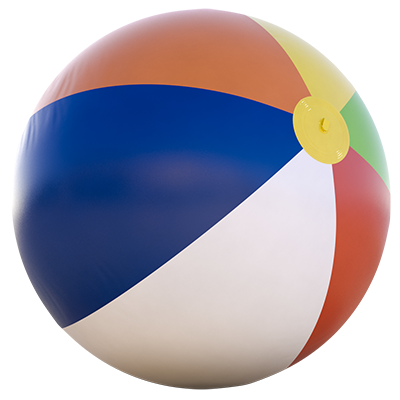California has been a magnet for wildflower fans in the last decade, thanks to the spectacular “flower mageddons” of 2016, 2019, and 2023. In those years, a bigger-than-average spring bloom was fueled by drenching rainstorms in autumn and winter.
Statewide precipitation levels are high again in 2024, and the critical flower-making month of February was especially wet. That sets the stage for a great wildflower season, but experts say the big blooms will most likely occur in certain locations, not statewide—and not necessarily in the same spots as last year.
“The timing and amount of rain is right,” says Susan Feldtman, a retired plant biologist from the University of California at Riverside. “But there are many factors that affect bloom events, and wildflowers can be fickle.”
Flower seekers are focusing on California’s deserts right now, where blooms have been appearing since late December due to an unusual amount of late-summer and autumn rainfall. The good news: The show will keep on going thanks to February’s substantial rain.
Read on to find out where the bloom is happening now, and where it will occur in coming weeks. But first, brush up on your flower manners: Tread carefully among the colorful splendor and follow the California Responsible Travel Code any time you’re enjoying the outdoors. Stay on established trails, don’t ever pick wildflowers, and no matter how much you want that close-up, don’t step on vulnerable plant life.
Southern California
Coachella Valley Preserve & Indian Canyons: The Greater Palm Springs area is seeing a lot of color right now. Feldtman reports that the flowers at Coachella Valley Preserve are in full swing, especially along the ridgeline trail to Pushwalla Palms. “The ridge is covered in huge mats of purple sand verbena and bright yellow desert gold,” she says. Additionally, beavertail cactus are starting to show flashy magenta flowers in Palm Springs’ Indian Canyons, and scattered lupine and cactus are blooming along parts of the North Lykken Trail in downtown Palm Springs.
Death Valley National Park: On California’s far eastern side, this astoundingly large and beautiful desert park hosts a rare and fleeting superbloom about once a decade—the last three occurred in 2016, 2006, and 1998. Death Valley spokesperson Abby Wines says for 2024 she predicts “there will be nice flowers this spring but not a full superbloom.” Right now, the park offers spotty sightings of mariposa lily, desert paintbrush, and monkeyflower along Badwater Road and around Furnace Creek (check Death Valley’s wildflower web page for updates).
Anza-Borrego Desert State Park: The Anza-Borrego Desert Natural History Association reports that flower hotspots like Henderson Canyon Road and Coyote Canyon are painted with splotches of desert sunflower, sand verbena, dune evening primrose, and brown-eyed primrose. The Borrego Badlands are sprouting with thousands of desert lily plants, but they aren’t yet blooming. For updates, call the park’s wildflower hotline at 760-767-4684 or check the natural history association’s Borrego Blooms web page.
Antelope Valley California Poppy Reserve: The livestream “Poppy Cam” at Antelope Valley California Poppy Reserve, 75 miles northeast of Los Angeles, shows golden brown grasses and no poppies. But that’s typical for late February—still “pre-season” at the reserve. The Jane Pinheiro Interpretive Center will reopen March 1, and locals are hoping for a repeat of last year’s mind-boggling bloom, which began on March 10 and lasted for three weeks. Call the park’s wildflower hotline at 661-724-1180 or check the Poppy Cam for the latest updates.
Carrizo Plain National Monument: The Carrizo Plain Conservancy says the outlook for this grassland-covered preserve east of San Luis Obispo looks “promising.” With the grassy hills greening up, there’s potential for a repeat of 2023’s spectacular show, which colored the Temblor Range’s ridgelines and Soda Lake’s shoreline. If the bloom occurs, plan on an ETA of mid- to late March.
Northern California
Wildflower photographer Lisa Berry says Northern California’s first floral event typically occurs in the Sierra Nevada foothills starting in mid- to late March. One early-blooming destination is North Table Mountain Ecological Reserve near Oroville. “Table Mountain can be covered in goldfields and sky lupine, with vibrant patches of pink and magenta bitter root decorating volcanic slabs, white meadowfoam lining the streams, and purple owl’s clover brushing the grasses,” she says.
Berry also recommends Buttermilk Bend Trail in South Yuba River State Park near Penn Valley. The easy path runs 2.4 miles alongside the granite-lined pools of the South Yuba River, and interpretive signs identify the flowers. Berry says to look for fairy lanterns, live forever, redbud, and the elusive Dutchman’s pipe, a vine with a distinctive saxophone-like flower.
For a longer hike, head to the Stevens Trail near Colfax, which travels 4.5 miles one-way to the banks of the North Fork of the American River. “My favorite lupine, harlequin lupine, can be seen on the Stevens Trail,” Berry says. Along with the pink-and-yellow lupine, she says you'll also see bush poppy, Chinese houses, bush monkeyflower, and slopes covered in tufted poppy.
In May, Berry goes flower-hunting north of Truckee. “Plumas County and the Sierraville area have wonderful meadows and hillsides to explore,” she says. “Blue camas emerges early in the meadows.” After the camas flowers are finished, others make their appearance: prairie smoke, mariposa lily, and Hooker’s balsamroot.
For the best petal-peeping, timing is everything. “Once the summer temps hit, the window for catching the peak bloom will soon close,” Berry says. Even small changes in the weather can affect the bloom for better or worse, so keep checking the web for updates on current conditions. The good news is that the bloom moves upward with mountain elevations, so the Sierra’s highest peaks show their flowers as late as July and August.


